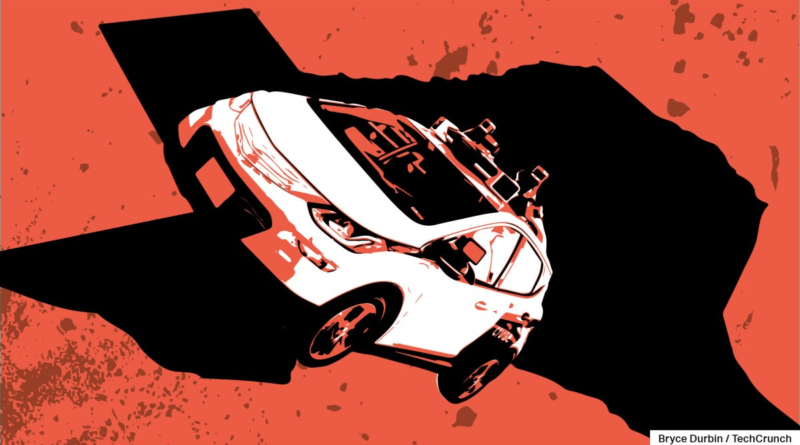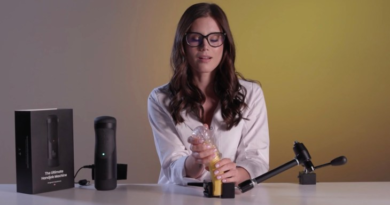The Wild West of robotaxis: Will Texas be a regulatory haven or chaos unleashed?
All eyes might be on the California robotaxi market, but Texas is the one shaping up to be the next hot testbed of the technology — and regulatory fights that could follow.
The Lone Star State has been home to autonomous vehicle testing, particularly with trucks, for years now. However, Texas, a state with negligible AV regulation, is poised to draw a greater share of industry giants and startups alike as regulatory pressure mounts in California.
The stakes are higher than the pile of money Texas stands to gain if more companies set up shop in the state. Texas not only lacks robust AV regulation, but state law expressly prohibits cities from regulating the technology that will be tested and deployed on its streets. How robotaxi expansion plays out in Texas could inform how other states deal with the pioneer technology.
Governments could either come down on the side of increased skepticism or increased opportunism, Bryant Walker Smith, associate professor of law at the University of South Carolina, said in a recent interview.
“On the one hand, you could have state or local officials saying we’re really concerned about a company or a technology or the entire industry,” said Smith, who has expertise in automated driving, policy and law, “we have increasing data points that justify our concern, and we need to restrict what they’re doing in our state.”
Or, Texas might produce certain politicians or governments that see Cruise’s drama in California as an opportunity.
“They might say, mistakes are gonna happen. Human driving is dangerous, and you’re showing that your system on the whole is safer than humans, so we want you in our state. Don’t worry about all this trouble you’re getting into in California. Come here, and we’ll treat you right,” Smith explained.
As fleets expand and issues undoubtedly arise, how will Texas navigate the fine line between encouraging innovation and safeguarding its streets?
Cruise cars in reverse
Cruise, GM’s self-driving car subsidiary, has paused operations across the country and recalled its vehicles after its permits to operate in California were suspended, following an incident that left a pedestrian, who had been hit by a human-driven vehicle, stuck under and dragged by a Cruise robotaxi.
GM has poured billions of dollars into Cruise and issued it a $5 billion line of credit. It’s unlikely that GM will scrap its efforts altogether despite Cruise’s current problems and its significant cash burn; Cruise has spent $8 billion since 2017.
When Cruise does start up operations again, it may not be able — or want — to return to California. That leaves a few other markets, including Arizona and Texas. Cruise had launched a limited commercial service in Austin and Houston, and started testing in Dallas.
Cruise’s main competition, Waymo, is also eyeing an Austin expansion. The company said it would begin initial operations there in the fall, with a public ride-hail service open at a later date.
Cruise isn’t the first company to leave California for the greener regulatory pastures of Texas. Elon Musk moved Tesla headquarters to Austin, Texas after grappling with California officials during the COVID-19 pandemic over forced closures of the company’s factory in Fremont.
Austin complaints
Cruise had about 250 vehicles in Austin and was operating on limited streets during evening hours before it paused driverless operations across its fleet on October 26. Austin collected more than 50 Cruise-related complaints between August and October, many of which mirror those made by their counterparts in San Francisco.
They ranged from the fastidious, such as a resident complaining about her once quiet street now subject to countless Cruise laps, to the all-too-familiar complaint of robotaxis bricking and blocking traffic and the outright dangerous report of a pedestrian nearly struck while crossing the street.
Austin residents and agencies have expressed concern that expanding the fleet would only multiply those problems.
Ride-hailing replay
Austin has been at a similar crossroads before.
Uber and Lyft launched in Austin around 2014. Two years later, the city implemented its own ride-hailing laws that required companies to perform background checks for drivers. Rather than comply, the two companies pulled out of Austin altogether, and then ran to state legislators for help.
Before the Texas State Legislature went into session in 2017, Uber and Lyft cranked up lobbying efforts in hopes of wrestling power back away from cities.
The two firms came with “trucks of money to buy some more favorable regulation” that preempted cities across the state from enacting municipal-level regulations, according to someone familiar with the matter. Lobbying records show that in 2016, Uber and Lyft collectively paid $2.3 million through 40 lobbyists to block cities from regulating their ride-hail businesses, according to citizen group Texans for Public Justice.
Gov. Greg Abbott signed the bill for HB 100, which gave the state the power to regulate ride-hail companies, provided those companies pay an annual fee.
Uber and Lyft, both of which were pursuing robotaxis at the time, also helped successfully sway legislators to pass a similar bill during that legislative session that prohibited cities from regulating autonomous vehicles. The bill enshrined minimum safety requirements for AVs to be deployed on public roads. It also sent a signal to companies in California and elsewhere that Texas was open for business.
How city officials can fight back
Barring a high-profile incident that gets the attention of Gov. Abbott’s office, it’s unlikely the state will pursue autonomous vehicle regulation. That leaves cities with few choices.
Texas’ next legislative session is scheduled for January 2025. Austin City Council member Zo Qadri, who represents a district that covers much of the area in which Cruise was operating, told TechCrunch his office is working to push the conversation up to the state level, but he’d be surprised if the Republican-controlled legislature made changes in 2025.
“AV technology has advanced a lot faster than some doubters would have expected, but the fact is that it’s still not ready for prime time, and using public streets as testing grounds to try to eventually get it there is far less than ideal,” said Qadri. “It’s deeply unfortunate to think that while we have tried and true tools and technologies that work in cities across the world — transit, sidewalks, bike infrastructure, better land use — private companies are burning billions upon billions to try to reinvent the wheel.”
Texas cities do have one ace up their sleeves that California cities do not: the ability to ruthlessly and discriminately ticket robotaxis.
In California, a human needs to be present in a vehicle to receive a fine. But in Texas, when an AV is engaged, “the owner of the automated driving system is considered the operator of the automated motor vehicle solely for the purpose of assessing compliance with applicable traffic or motor vehicle laws…the automated driving system is considered to be licensed to operate the vehicle.”
That means Cruise — or Waymo or any other robotaxi company — is responsible for any traffic violations, collisions or general misbehavior of its vehicles.
“You could have a bunch of local police that are following the vehicles around, ticketing them for reckless driving, maintenance violations,” Smith said. “Traffic code is vague and full of opportunities for selective enforcement.”
In Texas, if a human driver accumulates too many points on their driving record within a specific time frame, their license could be suspended. The Texas Department of Public Safety might be obliged to issue a similar suspension against robotaxis should they create too much of a nuisance on public roads in cities.




